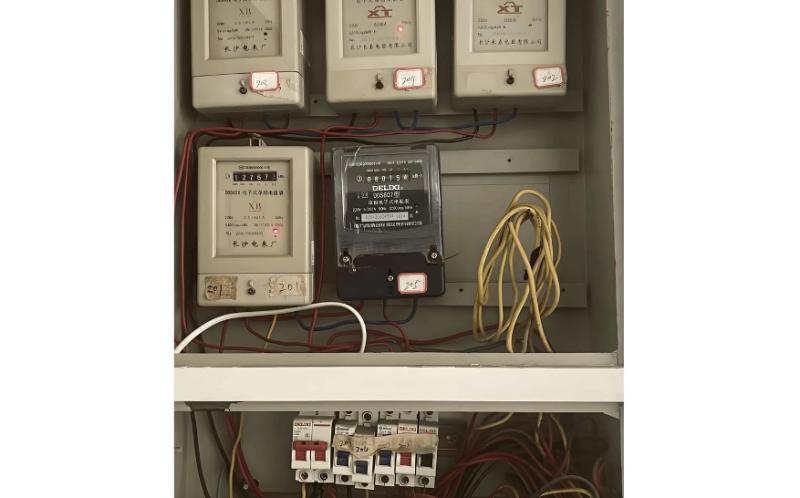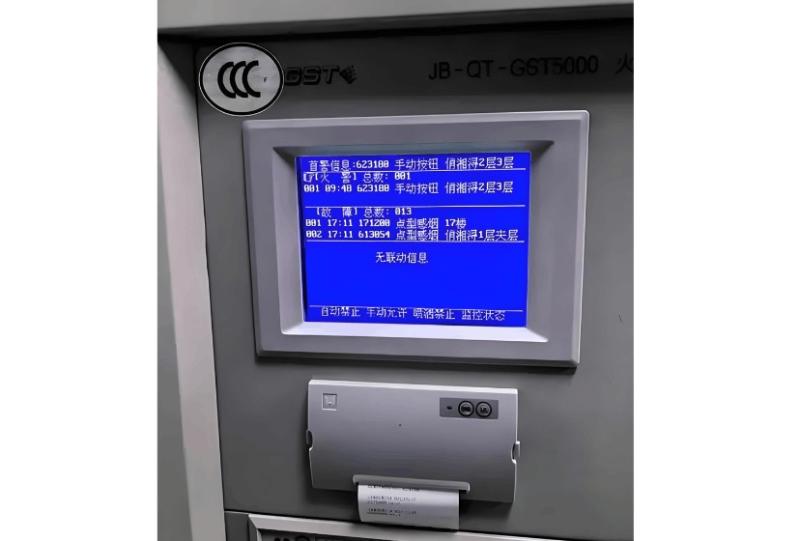1 Electrical Instrument Faults and Maintenance
1.1 Electricity Meter Faults and Maintenance
Over time, electricity meters may experience reduced accuracy due to component aging, wear, or environmental changes. This loss of precision can lead to inaccurate measurements, causing financial losses and disputes for both users and power supply companies. Additionally, external interference, electromagnetic interference, or internal faults can result in energy measurement errors, leading to incorrect billing and harming the interests of both parties. Furthermore, failures in communication modules, software issues, or hardware damage can prevent remote meter reading, increasing manual labor requirements and reducing operational efficiency.
Effective maintenance of electrical instruments requires regular calibration. Establish a periodic calibration schedule and use professional equipment to ensure the accuracy of electricity meters through routine adjustments. Secondly, conduct regular inspections and maintenance by checking all components—including sensors, metering chips, and displays—cleaning dust and debris to ensure normal operation. Simultaneously, inspect the tightness of screws, connectors, and other parts to maintain mechanical integrity.
Replace aging components periodically based on the meter’s service life and manufacturer recommendations, and consider upgrading to newer technologies to enhance performance and reliability. Additionally, maintain the remote reading system by ensuring the communication module functions properly, regularly inspecting communication devices, and updating system software to ensure up-to-date security and functionality. These measures help ensure reliable operation, reduce inaccuracies and failures, and maintain data accuracy and system reliability.

1.2 Faults and Maintenance of Substation Equipment Monitoring Instruments
Communication failures in monitoring instruments—caused by faulty communication modules, network issues, or configuration errors—can prevent real-time access to equipment status, affecting remote monitoring and control. Inaccurate monitoring data may arise from sensor failure, internal instrument faults, or data acquisition errors, potentially leading to misjudgment of equipment conditions and increased risk of equipment failure. Moreover, display malfunctions, software problems, or power issues can cause abnormal instrument displays, making it difficult for operators to interpret equipment status correctly and increasing the likelihood of operational errors.
Maintenance measures for substation monitoring instruments include:
Regular inspection of the monitoring system—check hardware components such as power supplies, sensors, and displays; perform regular software checks to ensure error-free operation.
Communication equipment maintenance—inspect communication modules, network connections, and cables regularly. For wireless systems, verify signal strength and stability to ensure reliable transmission.
Software updates—regularly check for new versions of monitoring software, upgrade promptly to gain enhanced features and security, and ensure correct configuration compatible with devices and networks.
Equipment calibration and maintenance—calibrate sensors periodically to ensure data accuracy; conduct internal inspections including cleaning and securing connectors.
Backup and recovery—regularly back up monitoring system data to prevent loss; establish disaster recovery plans to quickly restore system functionality in case of failure. These practices improve system stability, ensure accurate real-time monitoring, and support safe and reliable substation operations.

1.3 Faults and Maintenance of Circuit Breaker Condition Monitoring Instruments
Instruments monitoring circuit breaker status may suffer from signal loss, false alarms, or missed alarms. Regular inspection, sensor cleaning, and instrument calibration are essential to ensure accurate condition monitoring.
2 Maintenance Strategies for Electrical Instruments in Automatic Control Systems
In automatic control systems, instrument failures can significantly impact system stability and performance. The following are key maintenance strategies:
2.1 Regular Inspection and Maintenance
Regular inspection and cleaning are fundamental steps to ensure proper instrument operation. Establish a routine inspection schedule to check for physical damage to the instrument’s appearance, connections, and cabling, ensuring all critical components function normally. Determine inspection frequency based on equipment type, operating environment, and manufacturer recommendations.
Inspect the instrument’s surface, enclosure, and connectors for cracks, deformation, or other damage. Check cable connections for looseness or corrosion, and examine cable sheathing for integrity. Verify that indicators and displays are clear, without flickering or distortion. If sensors or probes are present, confirm their position and operational status. Record each inspection, noting identified issues, actions taken, and items requiring follow-up.
Ensure instrument surfaces are clean to prevent dust, dirt, or contaminants from affecting sensor or display performance. Use appropriate tools (e.g., soft brushes, lint-free cloths) to remove dust and grime. Clean connectors if necessary to ensure reliable connections, using suitable cleaners without damaging materials. Clear ventilation openings to maintain proper airflow and prevent overheating. Document cleaning dates and procedures for maintenance history tracking. Regular inspection and cleaning enhance instrument reliability, extend lifespan, and reduce failures caused by physical damage or contamination.
2.2 Fault Diagnosis and Troubleshooting
Deploying a fault diagnosis system is crucial for real-time monitoring and identifying instrument anomalies, improving system reliability and efficiency.
Select a compatible fault diagnosis system that integrates well with existing instruments.
Sensor and data acquisition—integrate various sensors (e.g., temperature, pressure, current) and set high sampling rates for accurate real-time data.
Real-time monitoring and analysis—enable continuous monitoring to detect abnormalities promptly; use data analysis algorithms to identify patterns and predict potential failures.
Automated alerts—set threshold values for parameters; trigger alerts via SMS, email, or other means when thresholds are exceeded.
Remote access and control—allow remote monitoring and, where possible, integrate remote control for rapid intervention.
Historical data storage and analysis—store historical data for trend analysis and troubleshooting.
Fault codes and reports—the system should generate fault codes and detailed reports (including causes and repair suggestions) to assist technicians.
Such systems enable quick response to instrument anomalies, minimizing downtime and enhancing system performance.
2.3 Firmware and Software Updates
Regularly check instrument firmware versions and update to the latest release to fix known issues and improve performance. Keep associated control software updated to ensure hardware compatibility and apply the latest security patches.
2.4 Remote Monitoring and Management
Implement a remote monitoring system to track instrument status in real time and issue alerts upon anomalies. Where feasible, enable remote maintenance capabilities, allowing engineers to diagnose and resolve common issues remotely.
3 Conclusion
In summary, maintaining stable operation of electrical instruments is critical for power supply reliability and operational stability within power companies. By implementing these maintenance strategies, the impact of instrument failures on automatic control systems can be minimized, ensuring overall system stability, reliability, and efficient operation.























